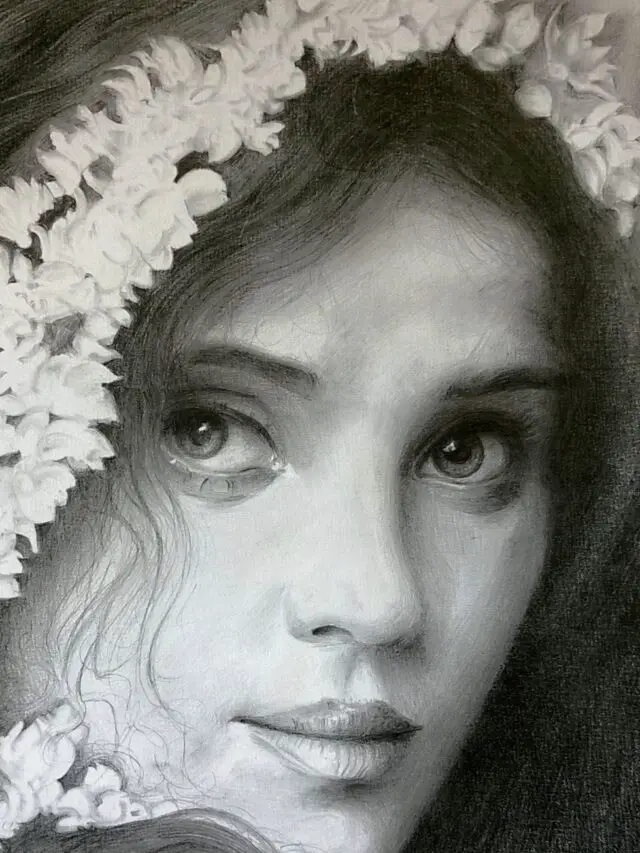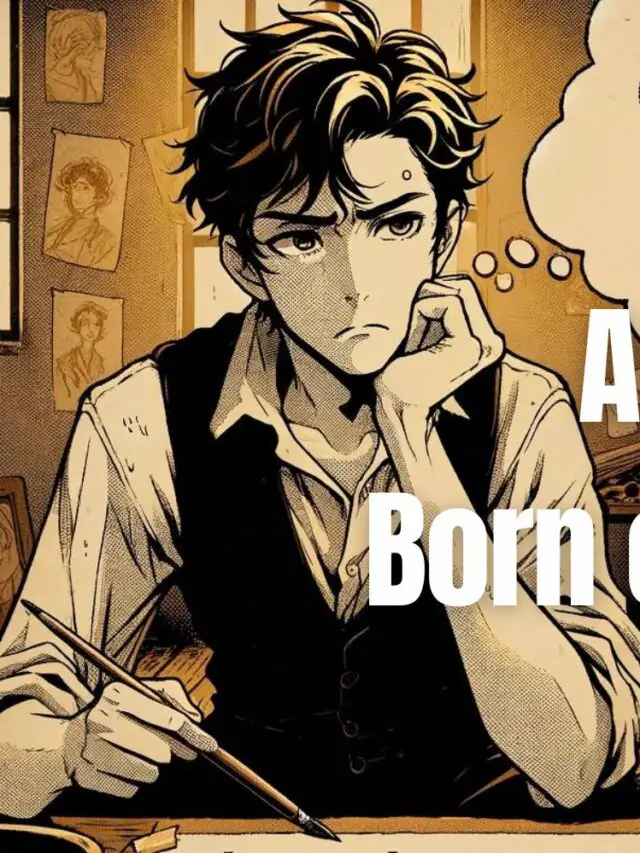If you’re an artist, you know that there are a lot of different drawing mediums to choose from. Each drawing medium has its own unique set of properties and benefits. So which one is right for you?
In this article, we’ll look at Charcoal and why it might not be the best choice for everyone. We’ll discuss some pros and cons of using Charcoal as a drawing medium and suggest alternatives that might suit your needs. Let’s get started.
Table of Contents
So, Why is Charcoal a Limited Drawing Medium?
Charcoal is a limited drawing medium because it can be challenging to control, smudges, and spreads quickly, making it hard to create precise lines and shapes for an artist. Additionally, Charcoal can be messy and difficult to erase, making corrections and changes challenging.
Charcoal can be a frustrating drawing medium for beginners or those who prefer more control over their art.
Despite its challenges, Charcoal can be a very versatile and expressive medium. Charcoal sticks come in various thicknesses and hardness, giving artists a wide range of line types to work with. Additionally, Charcoal can create rich, deep blacks that are perfect for creating shadows and adding depth to a drawing. When used skillfully, Charcoal can produce stunning works of art.
What is Charcoal, and What are its properties?
While Charcoal has been used as a drawing medium for centuries, it has several limitations that make it less than ideal for many artists.
Difficult to Erase

Charcoal is an excellent medium for drawing but can also be challenging to erase. Unlike pencils, Charcoal leaves a very thin layer of graphite on the paper that is difficult to remove. You may smudge your drawing or tear the paper when you try to erase it. It can be frustrating if you make a mistake or want to change your picture.
There are a few ways to ease the process of erasing Charcoal, but it’s still something to be aware of before you start drawing. And that is why It is essential to use a light touch when working on Charcoal.
Charcoal Drawing is Messy
Unlike pencils and pens, Charcoal leaves a fine layer of dust on everything it touches, including your clothes, furniture, and skin. And once it gets on your cloth or paper, it can be tough to remove.
What’s more, if you’re not careful, Charcoal can smudge easily, ruining your hard work instantly.
Many artists prefer to work in a well-ventilated area or outdoors with a charcoal medium. It is also essential to wear old clothes that don’t mind getting dirty.

Lack of Precision
One of the limitations of Charcoal is that it can be difficult to achieve precise lines and shapes. This limitation is because Charcoal is a relatively soft medium that can smudge easily if you are not careful.
Because of this, it is advisable to use Charcoal for more gestural drawings or sketches that you will later refine with another medium.
While using Charcoal may take some practice, it can be a very rewarding medium to work with. With its rich tones and ability to capture light and shadow, Charcoal can help you create stunning works of art.
Limited Tonal Range
Charcoal can only produce a limited number of shades, making it challenging to create specific effects. For example, creating a very light or very dark area can be challenging.
Additionally, Charcoal can be difficult to blend, so achieving smooth transitions between tones can be difficult. Also, because Charcoal is a dry medium, it can be challenging to add wet media, such as watercolors, over top of it, unlike what you can do with pencil drawing.
Health Hazards
The most serious hazard is the risk of inhalation. When Charcoal is used for drawing, it produces fine dust that you can easily inhale. The dust generated from this medium can irritate the lungs and cause respiratory problems. Inhaling too much charcoal dust can even be fatal.
Another health hazard associated with Charcoal is the risk of ingesting it. Consuming Charcoal dust can cause gastrointestinal problems and may even be poisonous. It can happen if the charcoal dust gets on your hands and you inadvertently put your fingers in your mouth.
Because of these health hazards, it is essential to use Charcoal safely.
Not Possible for Detail Work
Charcoal is a tricky medium to work with. It’s hard to control and produce fine lines and shapes, so it’s not well suited for intricate work. However, this quality makes it ideal for more general sketches and studies.
The nature of Charcoal means that you can’t use it for small areas of your drawing, but this also means that it’s perfect for quickly capturing the overall feel of a scene or subject. If you want to add depth and darkness to your sketches, then Charcoal is the way to go.
Just be prepared for the challenge of working with this fickle medium.
Susceptible to Fading
One of the limitations of charcoal drawing is that the image is susceptible to fading over time. Light, heat, or humidity can all cause the Charcoal to lose its intensity, eventually leading to a wash of pale grey. While this fading may not be a concern for some artists, it is something to keep in mind if you consider Charcoal for a long-term project.
As a result, they must be handled with care and stored correctly to maintain their quality over time. While this may seem daunting, it is relatively simple to preserve a charcoal drawing.
Not Suitable for all Artists
While charcoal drawing has many benefits, it’s not suitable for everyone. One of the main limitations of this medium is that it can be pretty messy. Unlike other mediums, Charcoal can smudge easily, making it difficult to achieve clean lines.
It’s also essential to work quickly with Charcoal, as the longer it sits on the paper, the darker it will become. As a result, artists who like to take their time and develop their work gradually may find Charcoal frustrating.
In addition, Charcoal can be difficult to erase, so artists prone to making mistakes may prefer to use a different medium.
How to Overcome the Limitations of Using Charcoal?
Charcoal has a lot of potential – it’s rich and versatile, and with a bit of practice, you can use it to create some truly stunning artwork. Here are five tips on how to overcome the limitations of using Charcoal in your art:

Use Multiple Layers
Charcoal is notorious for smudging, but you can make it much less likely to do so by working in multiple layers. Apply a light layer first, then a dark layer on top. You can then add details with a light pencil or even an eraser.
Work Quickly
The longer you work on one area, the greater the chance of accidental smudging. So, work quickly and confidently for preliminary studies, and don’t overthink your strokes.
Use Fixative
Fixative is a clear spray that helps to set the Charcoal and prevent smudging. Use it sparingly, though – too much Fixative can make your artwork look flat and lifeless.
Be Patient with Erasing
Charcoal can be difficult to erase, but that doesn’t mean you should give up and leave your mistakes in place. Take your time and use a soft eraser; eventually, you’ll get there.
Experiment
The best way to learn how to use Charcoal effectively is to experiment and practice as much as possible. Try different techniques and approaches, and see what works best for you.
With time and patience, you’ll be able to create some truly stunning artwork with Charcoal.

Alternatives to Using Charcoal as a Drawing Medium
When it comes to drawing materials, there are endless possibilities. But for many artists, Charcoal is the go-to medium. Charcoal sticks are easy to use and produce bold, dramatic results. Plus, they’re relatively inexpensive.
But Charcoal has its limitations, is not suitable for all artists, and isn’t the only option out there. If you’re looking for a different art medium, here are a few alternatives to consider:
Graphite pencils
Graphite pencils come in a wide range of hardness levels, from very soft to very hard. So you can get anything from a light sketch to a dark, detailed drawing. And unlike Charcoal, graphite is erasable, which can be handy if you make a mistake.
Pen and Ink
Pen and Ink are perfect for those who want to experiment with line work. It can be used to create delicate or bold drawings, depending on the type of pen you use. And like Charcoal, Ink is permanent once it dries, so you’ll need to plan your picture carefully before you start.
Soft Pastels
Soft Pastels are great for creating soft, expressive drawings. They come in dry and oil-based formulas and a wide range of colors. And unlike Charcoal, pastels don’t produce dust, so they’re less messy.
Conclusion:
Charcoal is an excellent medium for artists who want to create dramatic and expressive artwork. But it can be messy and difficult to erase, frustrating for some artists.
If you’re struggling with the limitations of Charcoal, here are five tips on how to overcome them: 1) Work in multiple layers; 2) Work quickly; 3) Use fixative; 4) Be patient with erasing; 5) Experiment.
Additionally, many other drawing materials may better suit your needs. So experiment with different mediums until you find one perfect for you. With practice, you’ll be able to create beautiful charcoal drawings that express your unique artistic vision.
Frequently Asked Questions
-
Why is Charcoal Drawing so Hard?
Mastering charcoal drawing is a feat of considerable difficulty, as it necessitates an exceptional knowledge of the medium’s techniques. An artist must be able to use shading and perspective to add depth and understand how different gradients and textures can be created with their chosen charcoal. Moreover, this requires excellent precision since mistakes can only be corrected by damaging the artwork.
-
Is Charcoal Better Than Pencil?
Regarding the artwork, pencil, and charcoal offer unique advantages that make them suitable for different drawings. Charcoal is best suited for producing dark, intricate tones and textures in larger pieces, while pencil can accurately capture finer details within a smaller piece of art.
-
Do Charcoal Drawings Fade?
Charcoal drawings can fade over time if not properly preserved. To maximize the longevity of your charcoal art, consider coating it with a fixative or varnish to form an impenetrable barrier from light and moisture. Additionally, store all artwork in dry areas where they will not be exposed to direct sunlight.
-
Why is Charcoal Better Than Graphite?
If you desire a detailed, textural result, look no further than charcoal. Charcoal can be effortlessly smudged and mixed for a softer transition than graphite, which requires more artistry. Plus, artwork made with charcoal has that unique grainy appearance like nothing else. It is truly unmatched in its ability to create stunning pieces of art.
-
Is Charcoal a Traditional Medium of Art?
Charcoal is a beloved medium of art, utilized by creatives for centuries. Thanks to its capacity to generate vivid and passionate lines with optimum darkness and texture, charcoal has been much sought-after over the years. Moreover, it can be efficiently blended, smoothed out, or rubbed off for exclusive results that are not attainable when using other artistic materials.
-
Is Charcoal Erasable?
Charcoal is an excellent option for artwork demanding fine details and manipulation due to its erasability. One can blend or rub it with a cloth to lighten the tone, making corrections simple. Furthermore, charcoal’s smudgibility gives you more control in creating contrast and depth, a key advantage over other mediums.





Comments are closed.